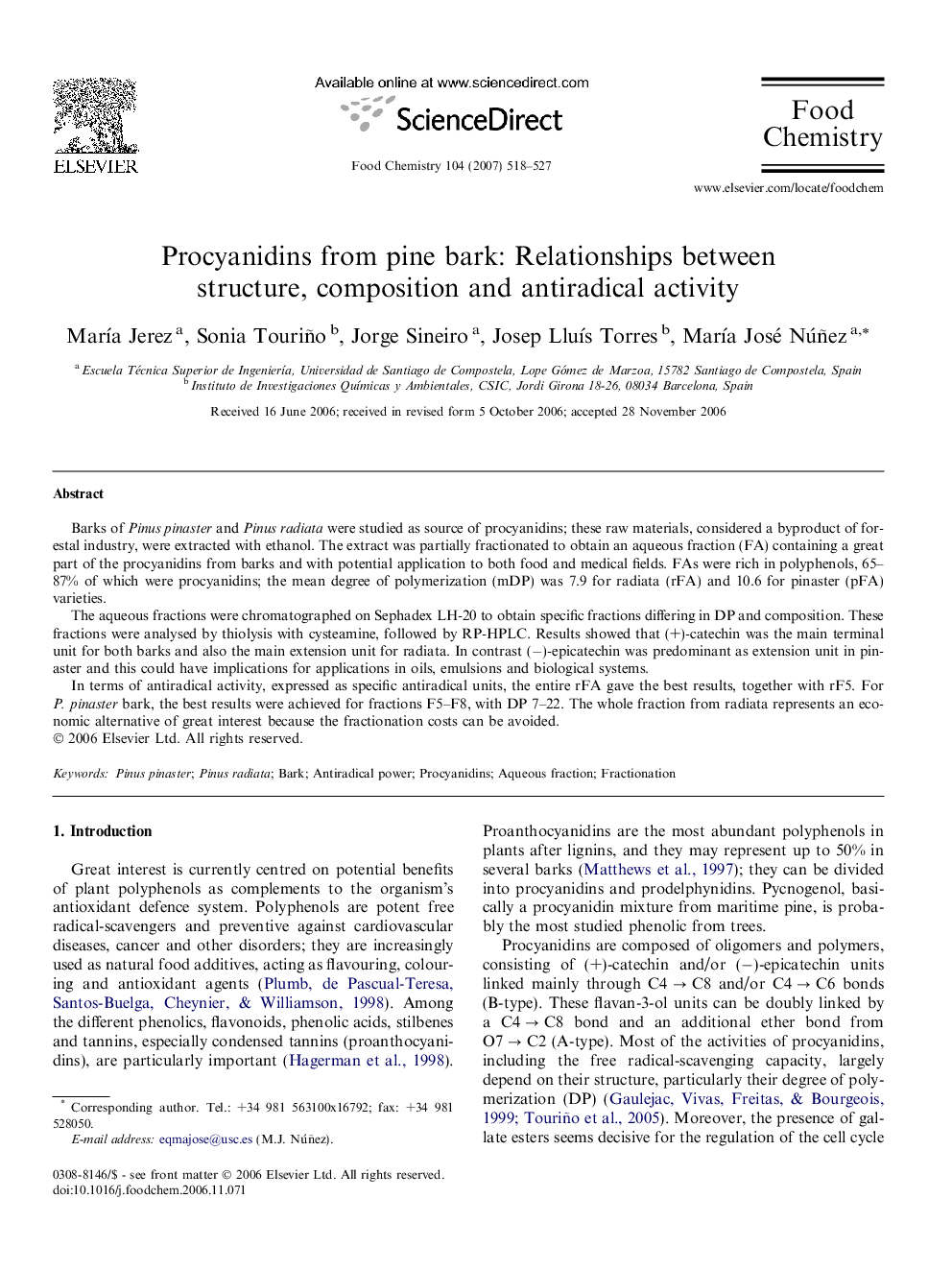| کد مقاله | کد نشریه | سال انتشار | مقاله انگلیسی | نسخه تمام متن |
|---|---|---|---|---|
| 1187769 | 963473 | 2007 | 10 صفحه PDF | دانلود رایگان |

Barks of Pinus pinaster and Pinus radiata were studied as source of procyanidins; these raw materials, considered a byproduct of forestal industry, were extracted with ethanol. The extract was partially fractionated to obtain an aqueous fraction (FA) containing a great part of the procyanidins from barks and with potential application to both food and medical fields. FAs were rich in polyphenols, 65–87% of which were procyanidins; the mean degree of polymerization (mDP) was 7.9 for radiata (rFA) and 10.6 for pinaster (pFA) varieties.The aqueous fractions were chromatographed on Sephadex LH-20 to obtain specific fractions differing in DP and composition. These fractions were analysed by thiolysis with cysteamine, followed by RP-HPLC. Results showed that (+)-catechin was the main terminal unit for both barks and also the main extension unit for radiata. In contrast (−)-epicatechin was predominant as extension unit in pinaster and this could have implications for applications in oils, emulsions and biological systems.In terms of antiradical activity, expressed as specific antiradical units, the entire rFA gave the best results, together with rF5. For P. pinaster bark, the best results were achieved for fractions F5–F8, with DP 7–22. The whole fraction from radiata represents an economic alternative of great interest because the fractionation costs can be avoided.
Journal: Food Chemistry - Volume 104, Issue 2, 2007, Pages 518–527